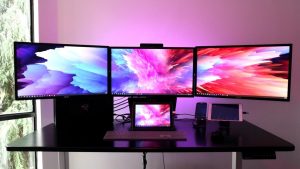
How to Craft an Engaging Cover Letter
Crafting an engaging cover letter is vital when it comes to the job application process. A well-written cover letter serves as your introduction to potential employers, allowing you to showcase your skills and qualifications effectively. It is your opportunity to make a lasting impression and differentiate yourself from other candidates. To guide you through this crucial step, here are ten invaluable tips to help you create an impactful cover letter.
Tip 1: Personalize Your Opening:
The opening of your cover letter is your chance to capture the reader’s attention. Avoid using generic salutations like “To Whom It May Concern” and instead personalize your greeting by addressing the hiring manager by name. This demonstrates your attentiveness and proactivity. If the job posting does not provide a name, take the time to research and find the appropriate contact. By personalizing the opening, you establish an immediate connection and showcase your dedication.
In the first paragraph, briefly express your interest in the position and the company. Explain why you are excited about the opportunity and how your skills align with the organization’s objectives. This demonstrates your enthusiasm and commitment from the outset.
Tip 2: Highlight Relevant Achievements:
A compelling cover letter should go beyond reiterating the information on your resume. Instead, it should complement your resume by highlighting specific achievements that directly relate to the position you are applying for. Identify key accomplishments or experiences that demonstrate your skills and qualifications. For instance, if you are applying for a sales role, mention your track record of surpassing targets or securing significant deals. These concrete examples help employers gauge your capabilities and differentiate you from other applicants.
In the subsequent paragraph, elaborate on one or two of your most noteworthy achievements. Provide context, quantify your results, and explain how your actions contributed to the success of a project or organization. Ensure that these accomplishments align with the requirements and responsibilities outlined in the job description.
Tip 3: Showcase Your Unique Selling Points:
Your cover letter should emphasize your unique qualities and what sets you apart from other candidates. Identify your distinct strengths, whether they are specific skills, experiences, or personal attributes that align with the job requirements. Highlighting your individual strengths helps employers understand the unique value you can bring to their organization.
In the following paragraph, delve deeper into your unique selling points. Explain how your skills or experiences differentiate you from other candidates and elaborate on how they can benefit the prospective employer. Use concrete examples or anecdotes to illustrate your points effectively.
Tip 4: Demonstrate Research and Knowledge:
Employers appreciate candidates who have taken the time to research the company and understand its values, mission, and industry. Incorporate this research into your cover letter to demonstrate your knowledge and genuine interest in the organization. Highlight specific aspects of the company that resonate with you and explain how your skills and background align with their goals. Showing that you have done your homework not only impresses employers but also indicates your dedication and proactive approach.
In the subsequent paragraphs, discuss the research you have conducted on the company. Share insights about their recent achievements, projects, or initiatives that have caught your attention. Connect these aspects to your own experiences or values to showcase the alignment between your aspirations and the company’s objectives.
Tip 5: Tailor Your Letter to the Job Description:
Each job posting comes with its own set of requirements and qualifications. It is essential to tailor your cover letter to align with the specific job description. Analyze the job requirements and identify key keywords and skills. Then, customize your cover letter to highlight your relevant experiences and capabilities that directly address those requirements. This tailored approach shows employers that you have thoroughly read the job description and are genuinely interested in the position.
In the following paragraph, address the specific qualifications and skills mentioned in the job description. Explain how your background, expertise, and achievements align with what the employer is seeking. Use examples to illustrate how you have successfully demonstrated these skills in previous roles or projects.
Tip 6: Keep It Concise and Clear:
While it’s essential to provide relevant details and showcase your qualifications, it’s equally important to keep your cover letter concise and clear. Avoid lengthy paragraphs or unnecessary details that may overwhelm the reader. Instead, aim for a balance between providing sufficient information and maintaining a concise and easy-to-read format. Use clear and straightforward language to convey your message effectively.
In the next paragraphs, focus on organizing your thoughts in a logical and structured manner. Use concise sentences to express your ideas and ensure each paragraph serves a specific purpose. Consider using bullet points or subheadings to break down information and enhance readability.
Tip 7: Showcase Your Passion and Enthusiasm:
Passion and enthusiasm are qualities that can make a significant impact on potential employers. Use your cover letter as an opportunity to express your genuine enthusiasm for the position and the company. Share why you are interested in the role and how it aligns with your long-term career goals. Let your excitement shine through your words to create a positive impression.
In the subsequent paragraph, express your passion for the field or industry and explain how the position aligns with your personal and professional aspirations. Highlight any relevant experiences, projects, or activities that have ignited your passion and motivated you to pursue this career path. This will demonstrate your commitment and dedication to the field.
Tip 8: Use Concrete Examples and Metrics:
To make your cover letter more engaging and impactful, incorporate concrete examples and measurable metrics whenever possible. Instead of making generic statements, provide specific instances where you have made a significant impact or achieved notable results. Quantify your achievements by including numbers, percentages, or specific outcomes to demonstrate the value you can bring to the prospective employer.
In the following paragraphs, provide two to three concrete examples of your accomplishments, using metrics to quantify your success. Explain how these achievements benefited your previous employers or contributed to the overall success of a project or team. This evidence-based approach adds credibility to your claims and strengthens your case as a qualified candidate.
Tip 9: Address Potential Gaps or Challenges:
If you have any gaps in your employment history or experiences that may raise questions, it’s important to address them proactively in your cover letter. Instead of leaving these gaps unexplained, provide a brief and honest explanation that focuses on the skills and experiences you have gained during that time. Frame these challenges as opportunities for growth and highlight how you have overcome them.
In the subsequent paragraph, briefly address any potential gaps or challenges in your professional journey. Explain how these experiences have contributed to your personal and professional development, emphasizing the valuable skills and resilience you have acquired. This demonstrates your ability to handle adversity and adapt to different situations.
Tip 10: End with a Strong Closing Statement:
Conclude your cover letter with a strong and confident closing statement. Reiterate your interest in the position, express your gratitude for the opportunity to apply, and indicate your willingness to discuss your qualifications further. End on a positive note and provide your contact information, making it easy for employers to reach out to you for further communication.
In the final paragraph, summarize your key points, reaffirm your enthusiasm, and express your confidence in your ability to contribute to the company’s success. Thank the reader for considering your application and provide your contact details, including your phone number and email address.
Crafting an engaging cover letter requires careful attention to detail and a strategic approach. By personalizing your opening, highlighting relevant achievements, showcasing your unique selling points, and tailoring your letter to the job description, you can create a cover letter that captivates employers. Remember to keep it concise, demonstrate research and knowledge, showcase passion and enthusiasm, use concrete examples, address potential gaps or challenges, and end with a strong closing statement. With these tips in mind, you’ll be well on your way to crafting an engaging cover letter that sets you apart from the competition and increases your chances of landing your desired job.













